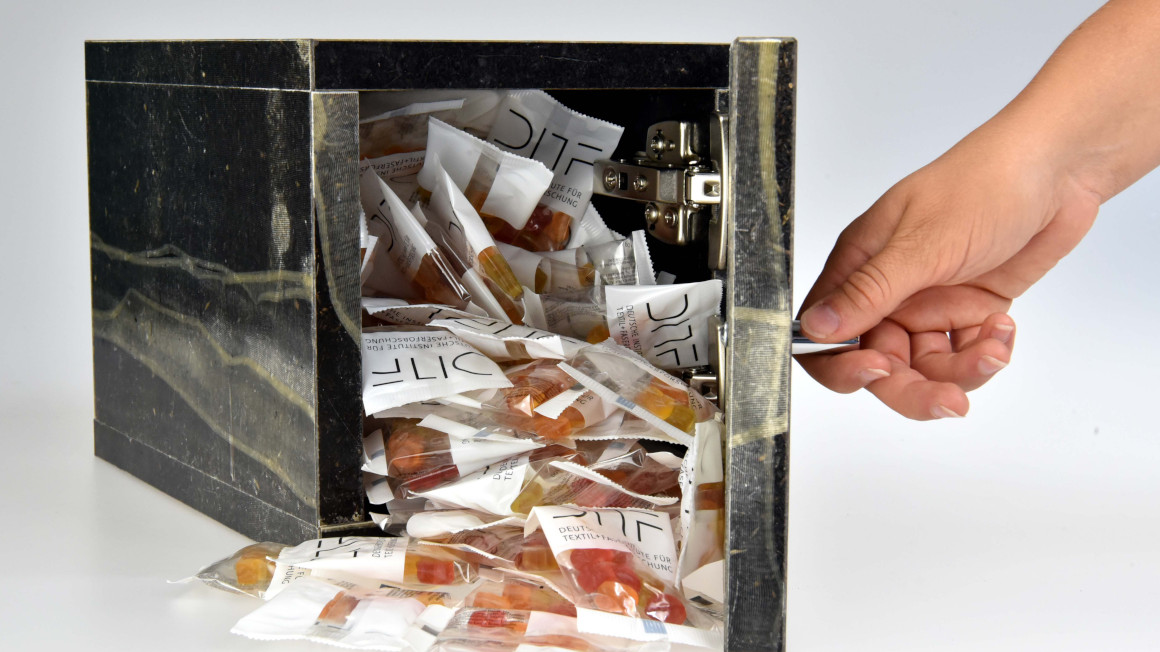Furniture made from fermentation residues
Researchers at the German Institute of Textile and Fiber Research Denkendorf, together with industrial partners, have processed plant fermentation residues from biogas plants into a composite material, which they used to make a piece of furniture.

What remains after harvesting usually ends up in the biogas plant and is used for energy. The resulting fermentation residues are often taken as fertilizer in agriculture because of their high nutrient content. Researchers from the German Institute of Textile and Fiber Research Denkendorf have now shown that the recycling chain for fermentation residues does not have to end in the field, but that they can be further processed in industry as a raw material.
Fermentation residues from hops as an industrial raw material
The focus of a research project with three industrial partners was on residues from Germany's largest hop-growing region in Hallertau. The so-called hop bine chaff left over from the harvest was initially converted into environmentally friendly biomethane in a biogas plant. However, the team used the fermentation residues to develop a composite material that can even be used to build furniture. Specifically, a composite material was produced for so-called laminates, which can be designed very flexibly and are therefore in great demand in the furniture industry.
New composite material for furniture construction
To this end, the plant residues from hop cultivation were first cleaned in an environmentally friendly manner. According to the researchers, a wet fleece was developed from this mass with Reutlingen University, which was pressed together with a bio-based resin system to form a composite material. The material is not only sustainable because no chemical additives were used in production. It is also resilient and can be used in a variety of ways, they say.
A small square cabinet that was built as a demonstrator shows that this sustainable composite material made from fermentation residues is actually suitable for furniture construction. The special design of the piece of furniture is characterized by residual materials that occur as offcuts in the textile industry and are thus also recycled in a new way. The research project was funded as part of the Central Innovation Program for SMEs (ZIM). In addition to DITF, Hopfenpower GmbH, Novis GmbH and Schreinerei Nuding were involved in the project.
bb


